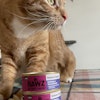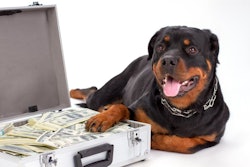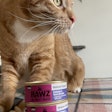
The Pet Food Manufacturers’ Association, United Kingdom pet food industry organization, “raised alarm bells” about the difficulty of exporting pet food to the European Union following Brexit, when the UK officially left the EU on Jan. 31, 2020. On Jan. 1 of this year, the legislative and regulatory changes became active.
PFMA surveyed their members on the effects on Brexit on their pet food businesses. Two-thirds of respondents reported inability to export their goods to the EU following Brexit.
According to the PFMA, the UK pet food industry accounts for GBP3 billion in the country’s economy. In 2019, UK pet food makers exported GBP285 million of pet food to the EU compared to GBP45 million to other global markets.
“We have come against red tape, vet shortages and haulers refusing to accept animal-based products in case they are stopped at the border,” Michael Bellingham, PFMA chief executive, said in a statement. “Many official veterinarians are unwilling to take on the extra work of certifying animal by-product consignments because they were not confident about what was required.”
One UK pet food exporters and PFMA member, World Feeds Ltd, stated the company was exporting to the United States but experienced numerous barriers to move products into the EU after January 1.
Pet food and Brexit: Failing to plan means planning to fail
In November of last year, Petfood Industry contributors, Paola Cane, Ph.D., and David Primrose, warned that 2020 should have been the year dedicated to negotiating the future terms of the deal that might rule the trading relationship between the EU and UK.
To ensure continuity of trade between the UK and EU, in general terms, UK pet food producers who export to the EU or are planning must adapt to changes in areas including:
- Nominating a European representative
- Labeling
- Traceability
- Risks – such as mycotoxins, aflatoxins, pesticides, Salmonella – associated with import of high-risk feed
- Customs duties and procedures
First, UK pet food producers will be required to nominate a third-party representative who is also holder of an EU feed business operator license. The details of this company and their EU license number must appear on the pet food products so they can be offered for sale within the EU.
For products being subject to customs clearance for the first time, these will be checked with increased scrutiny for compliance with every requirement of regulation EU 767/ 2009. This process might take up to 20 days or longer due to additional workloads associated with Brexit.
Much of the discussion on future trading arrangements lies with tariffs and nontariff barriers that are likely to have financial impact on U.K. and European operators. These include the requirement for export health certificates, the requirement to prove the origin of the raw material used in pet food and the need for veterinary inspection at the border.
Financially, depending on the composition and customs code, custom duties and tariffs could result in additional costs of up to EUR1000 (US$1,186)/ton or 9.6% of the tax base. Further costs include emptying containers/lorries, customs/veterinary inspection, support at the point of designated entry and potential product losses through damage. Besides adding cost, all of these will take time and require enough qualified personnel familiar with the current procedures.














